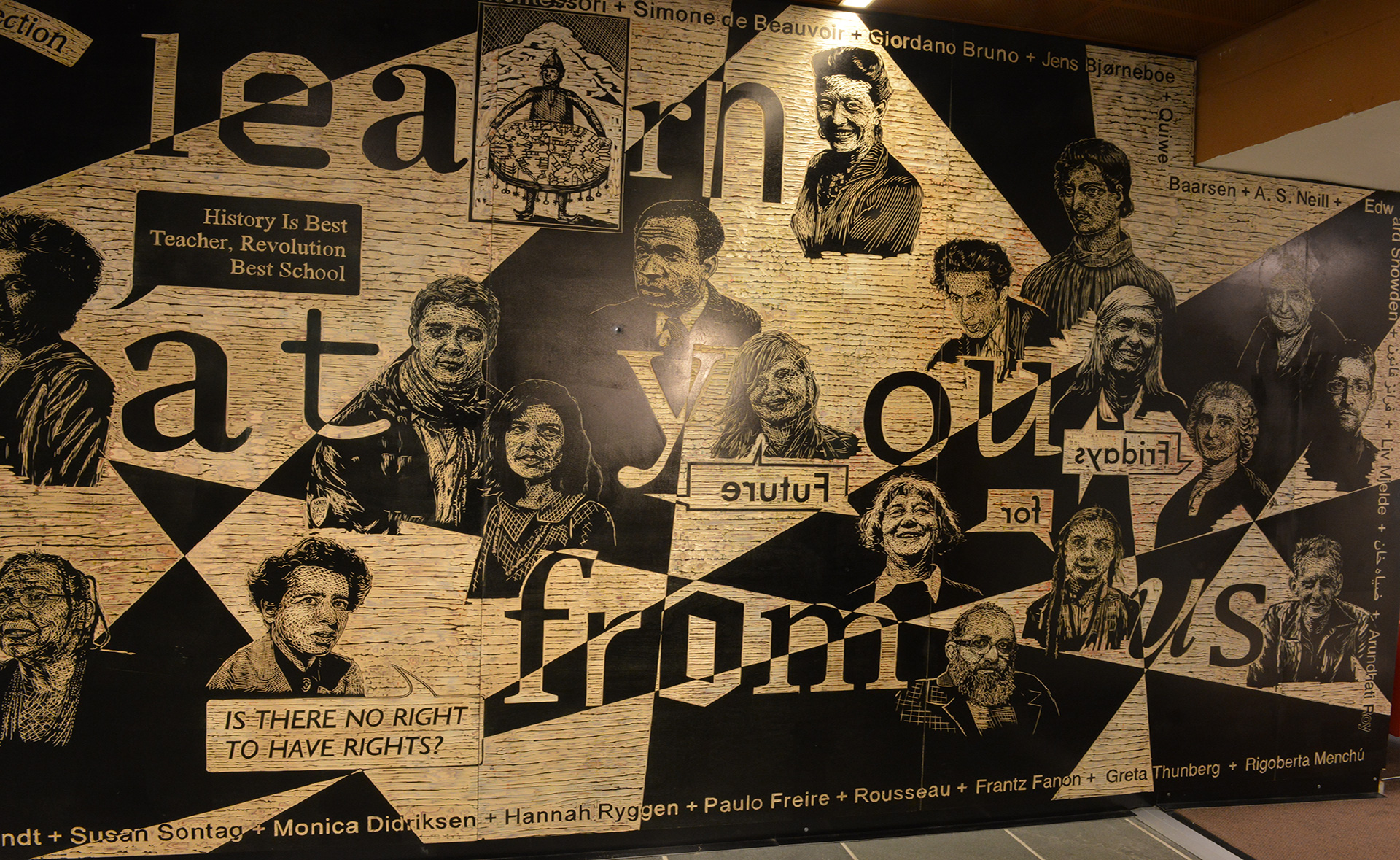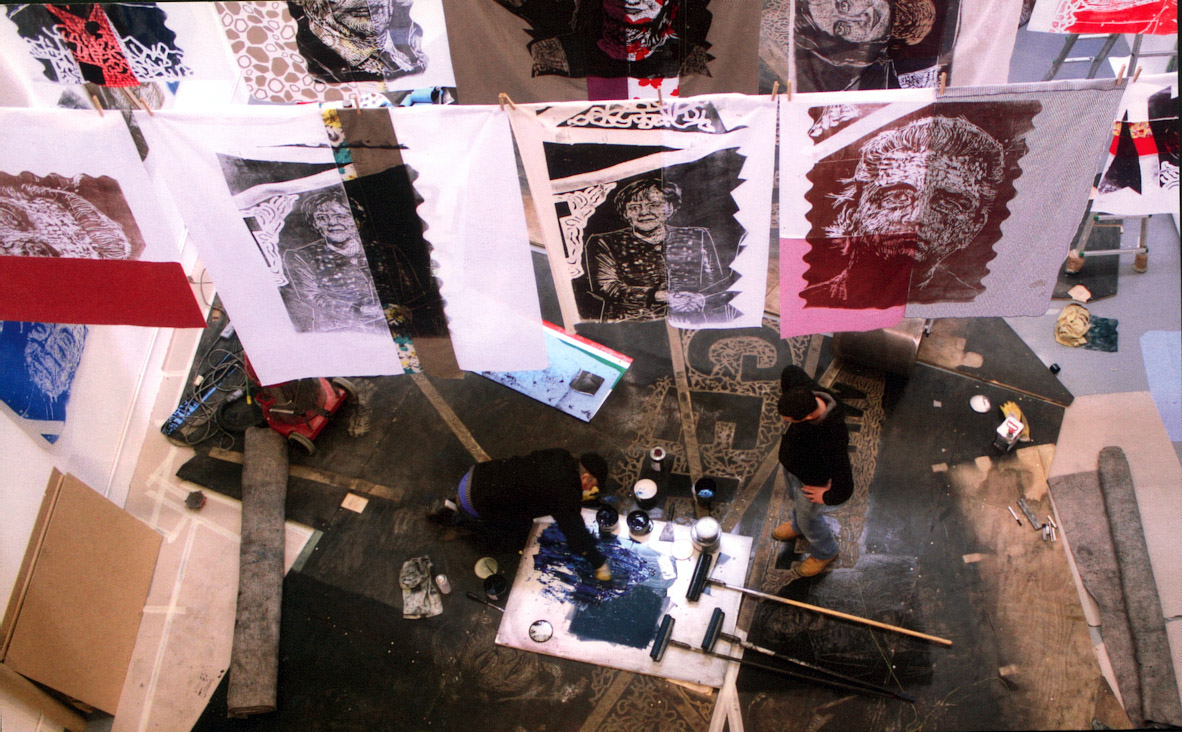15.9. – 13.11.2022
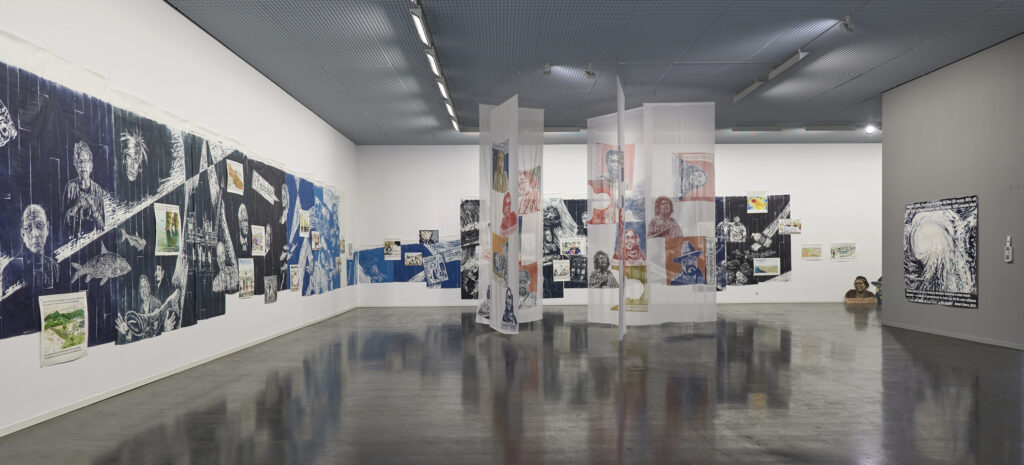
Kunsthaus Wiesbaden is pleased to present Water on Fire, a solo exhibition by Berlin-based artist Thomas Kilpper.
Water will replace the importance of oil and gas in the 21st century. In the last fifty years, the demand for water has increased dramatically due to the growth of the world’s population, the increase in conflicts over water resources, the privatisation and pollution of drinking water sources and the global climate crisis. On the occasion of the annual theme of the city of Wiesbaden, Water on Fire shows artworks by Kilpper, newly created primarily for this exhibition, on the diverse social aspects surrounding the topic of water.
Thomas Kilpper (*1956 in Stuttgart) works site-specifically with a wide range of media: installation, sculpture, graphics, photography and video. In particular, he is known for transfering floors of mostly empty buildings into large-format printing blocks and installations. In the exhibition Water on Fire, the immense power of these wood-cuts meets the comparatively sensitive appearance of watercolour drawings. The group of works Atlantic Footprints (2017) forms a kind of background noise of images of fishing and oil extraction in the Atlantic. This large-format wood print (ca 300 x 3000cm) is arranged for this exhibition at Kunsthaus Wiesbaden and shown for the first time in this form. A focal point are the watercolours and water drawings that are inserted into the woodcut Atlantic Footprints. They encompass a wide variety of themes and locate and contextualise themselves through image-related over- and underwritings. They address both historical and current events related to water: from floods in Wiesbaden (1955), in the Ahr Valley (2021) or Hurricane Katrina (2005) to the largely unknown water attack on the then German President Lübke (1968). The global problem of water scarcity and desertification is also addressed, and in a new series of woodcuts some of the water activists are honoured who fought for the universal basic right of access to healthy drinking water and against the overexploitation and commercialisation of the resource water by multinational corporations.
Water reflects the imbalance of global power relations. In the exhibition, Kilpper takes artistic liberty and rises to the challenge of uniting a wide variety of issues pictorially in one space and attempting to address the fundamental problems, none of which are new. The possibility of failure of this endeavour is quite given in view of the dimension and complexity. It is an artistic experimental arrangement. Water is neither free nor an infinite resource – but it connects us and ourselves, with all its qualities, around the globe.
Water on Fire was created in collaboration with artists Kaj Osteroth and Xiaopeng Zhou and is curated by Dr Miya Yoshida.
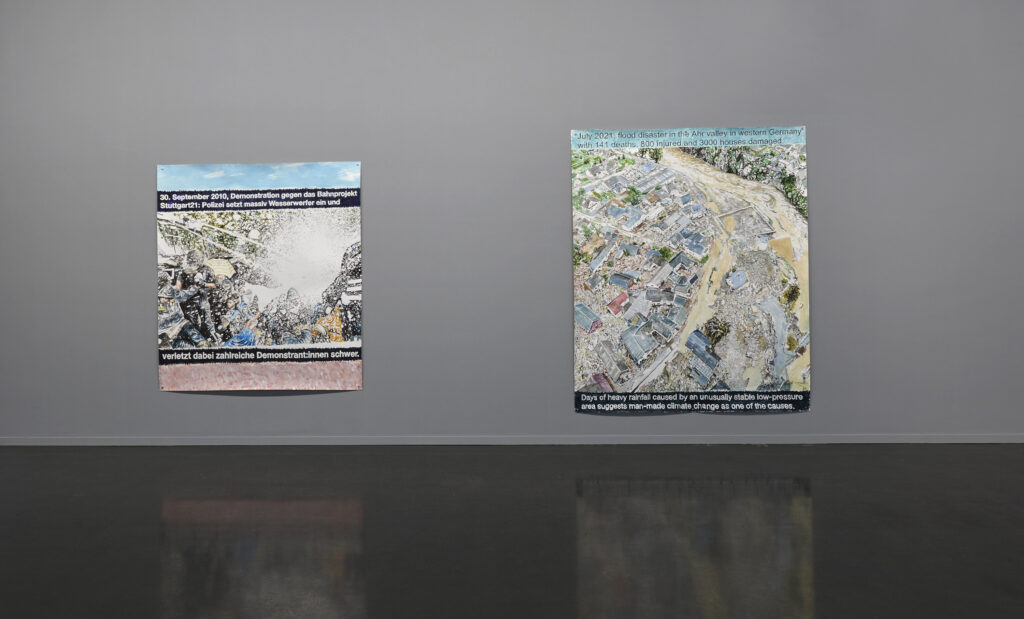
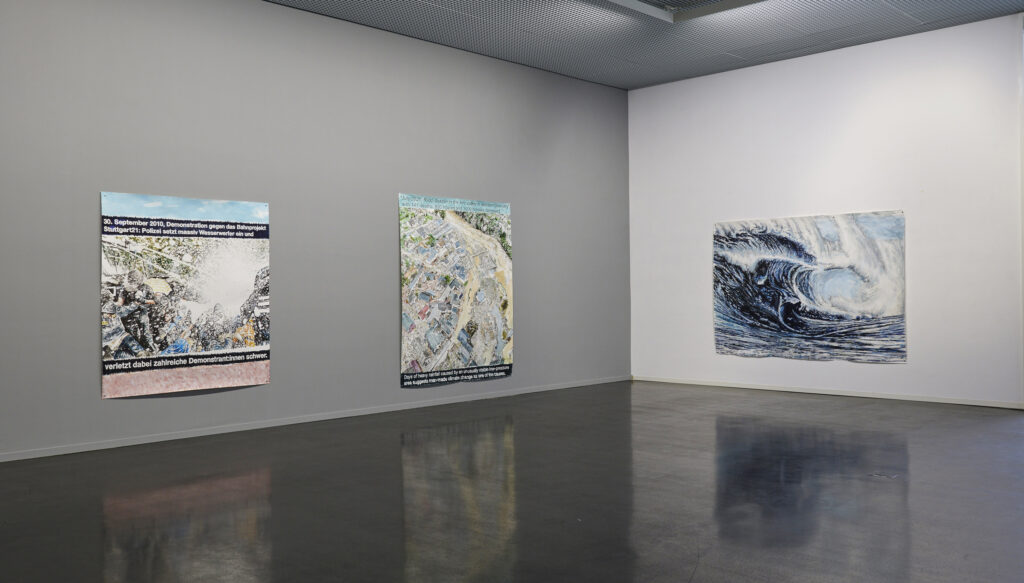
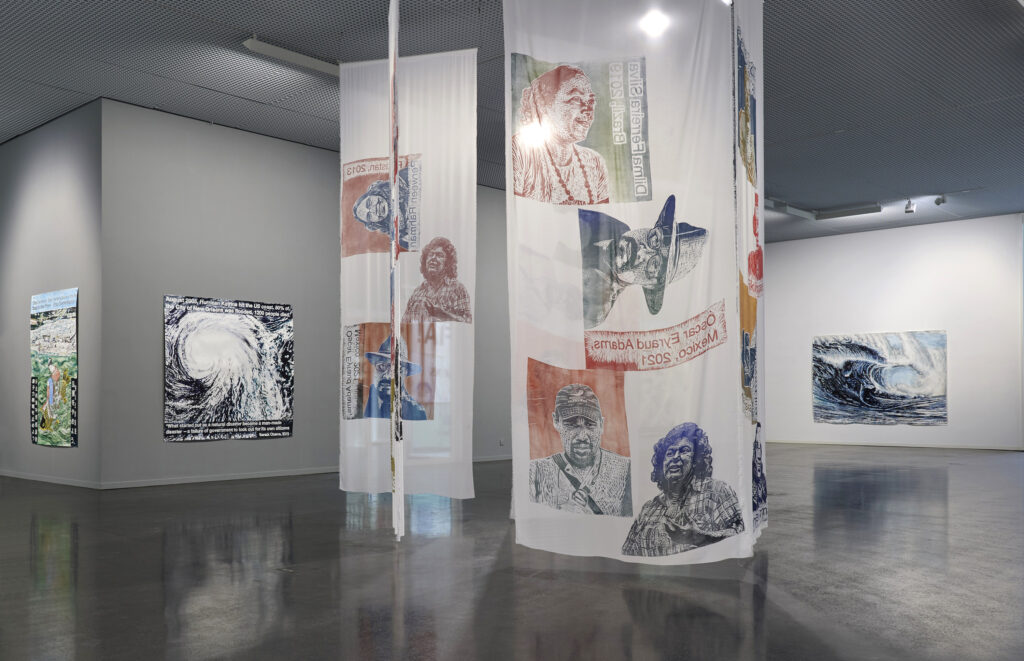
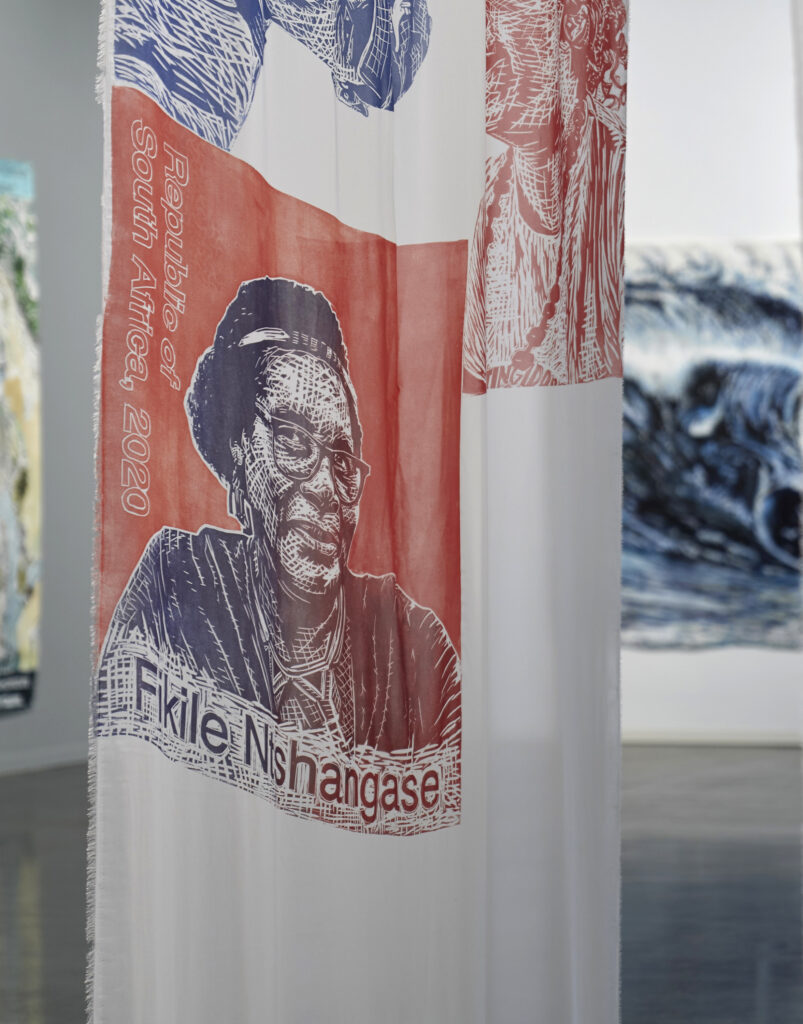
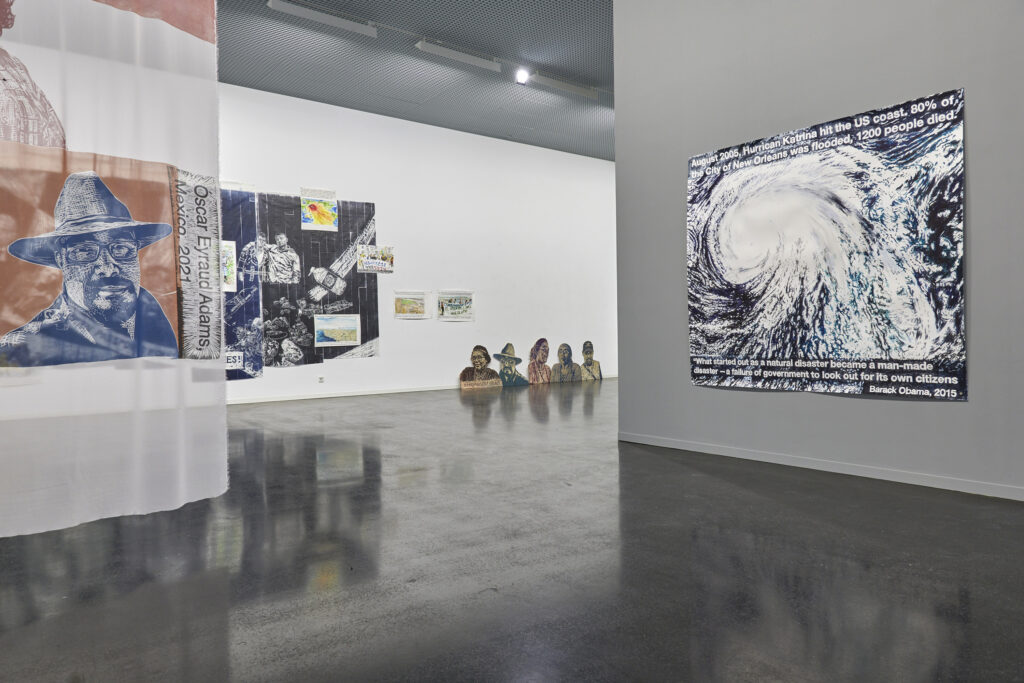
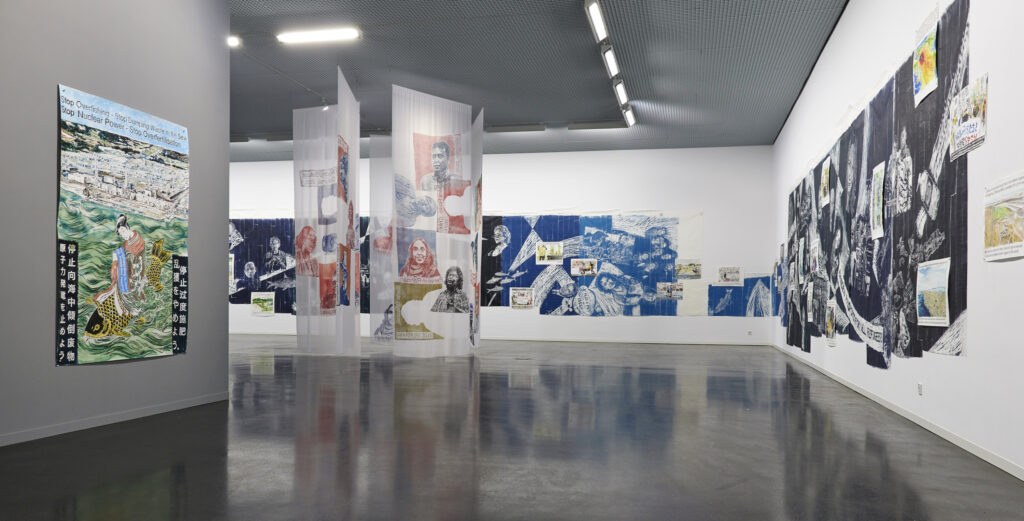
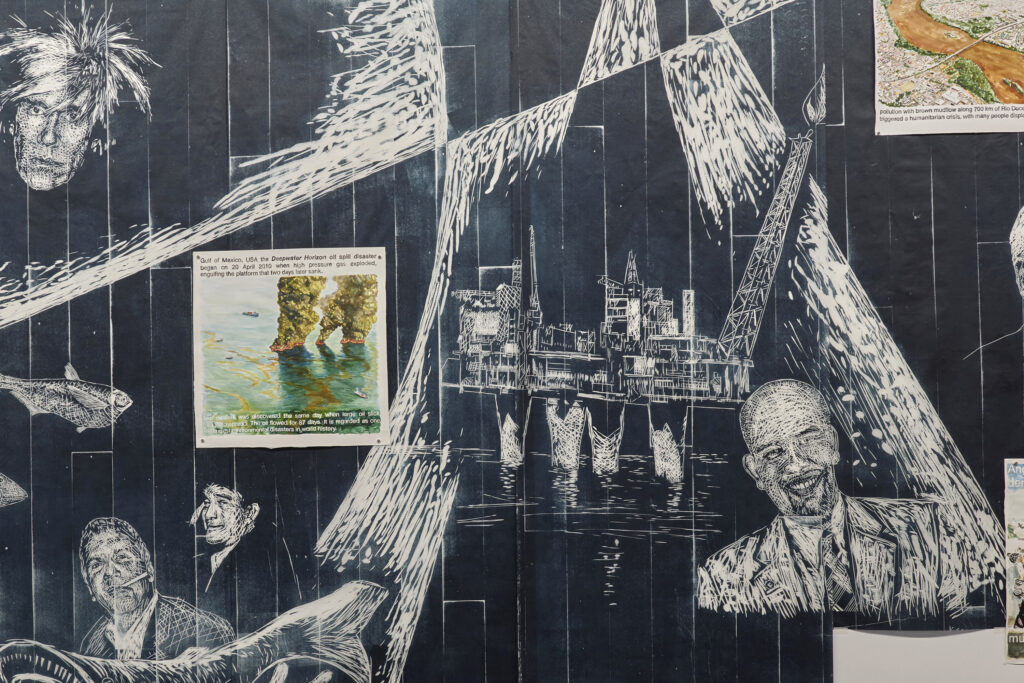
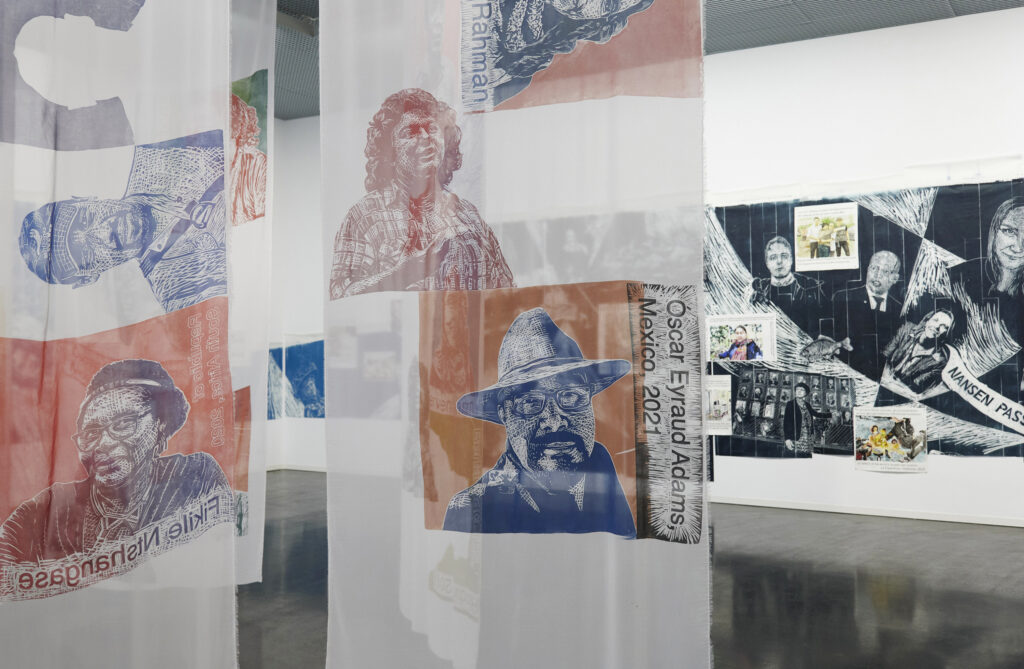
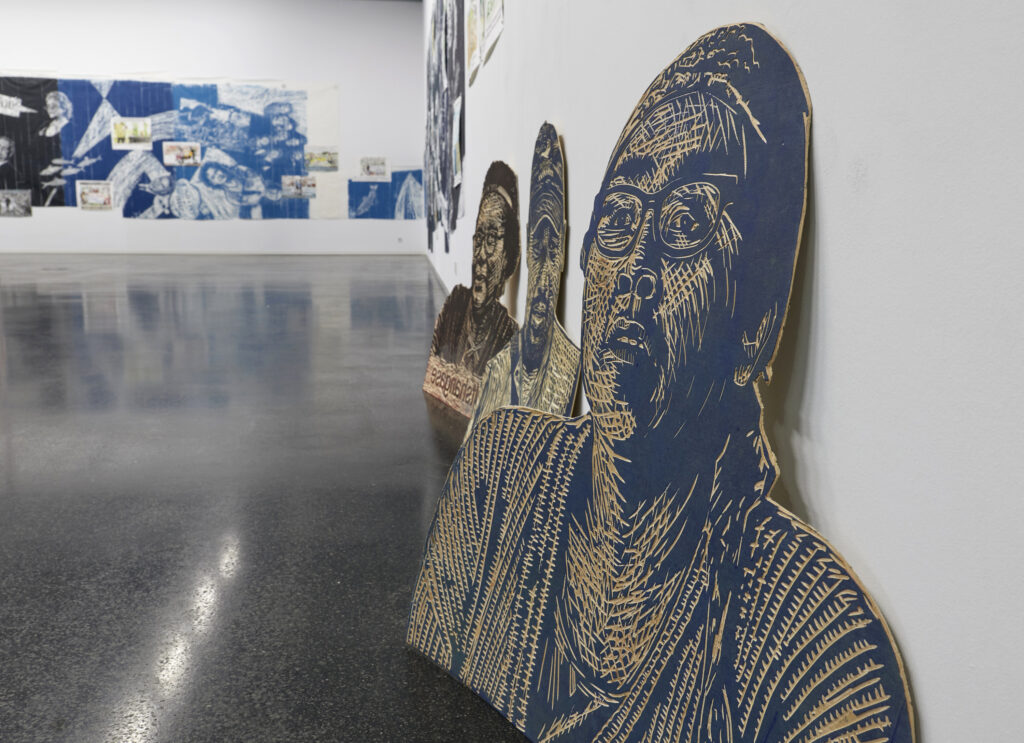
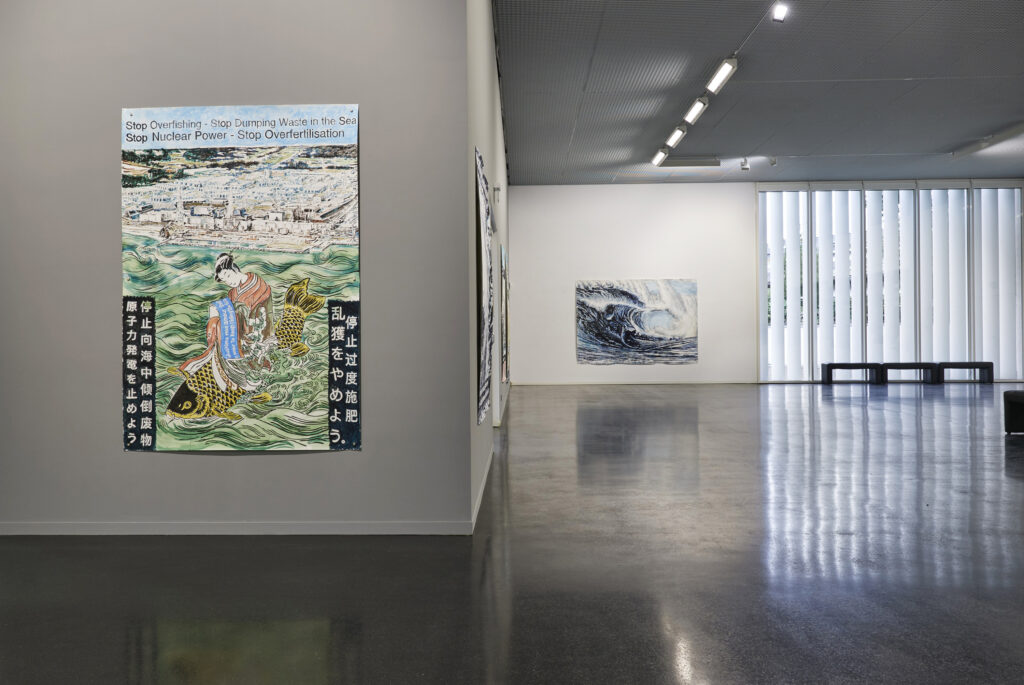
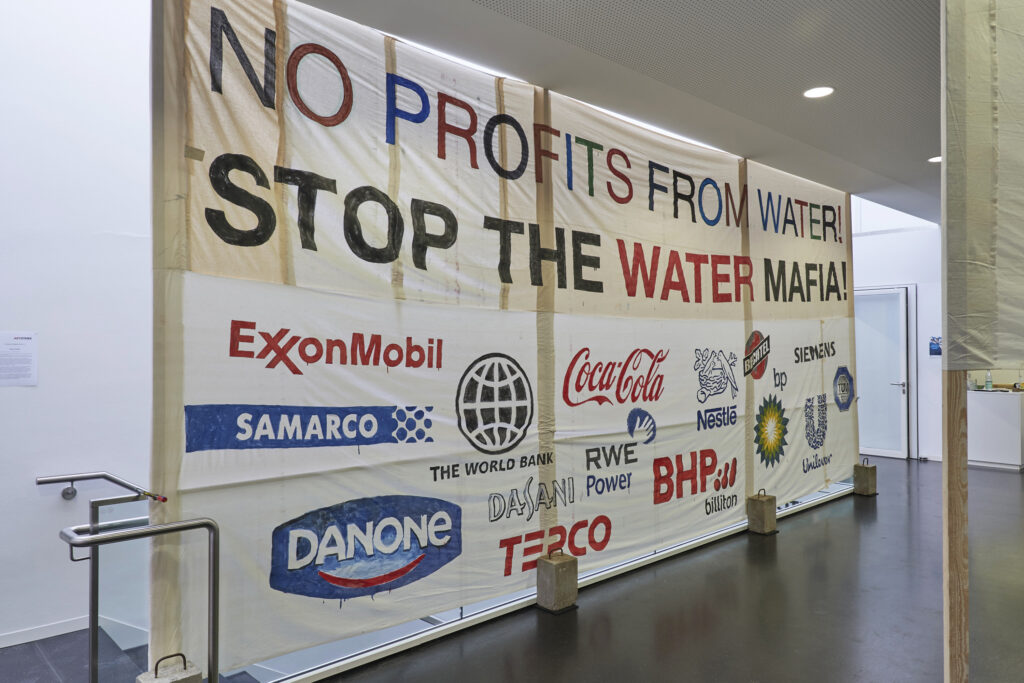
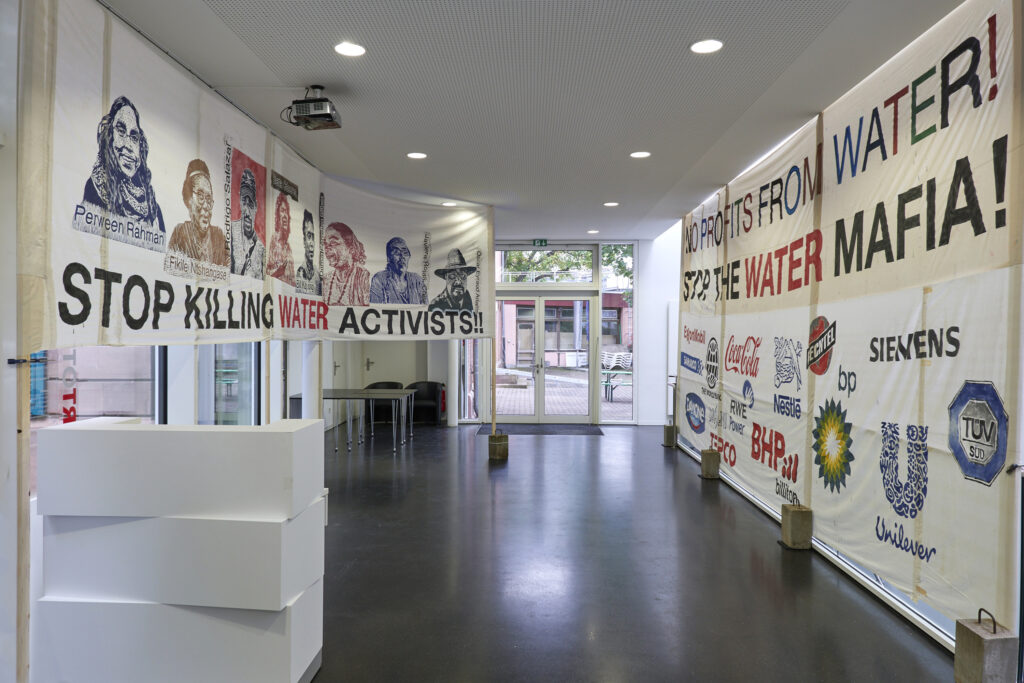
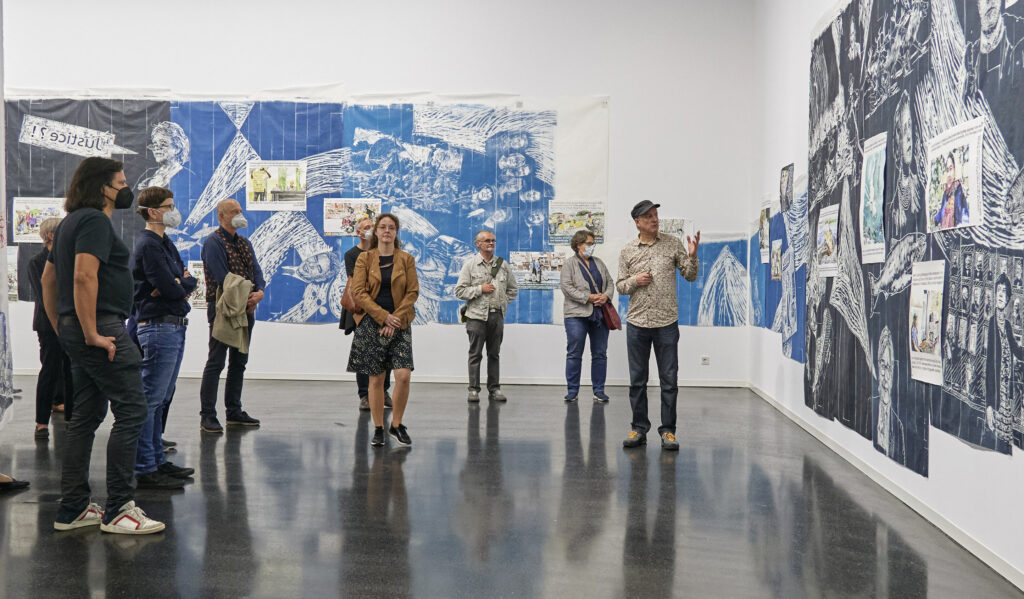
Eight woodcuts of international environmental and water activists
1. Berta Cáceres (1971-2016) was a well known environmental activist and representative of the Indigenous Lenca peoples in Honduras. She fought against the Agua Zarca dam on the Río Gualcarque, which was financed by European companies. In the process, the world’s largest dam builder was successfully forced to withdraw from the project. Berta Cáceres was murdered in her home by armed intruders after years of being threatened with death.
2. Bill Kayong (1973-2016) was an environmental activist in Malaysia. In the process, he worked to protect Indigenous communities in Sarawak who were resisting industrial palm oil companies and their land grabs as they cut down mangrove forests and pollute water with pesticides. Bill Kayong was shot dead while waiting at a traffic light during daylight hours.
3. Rodrigo Salazar (1976-2020) was deputy governor of the Indigenous Awá reserve of Piguambi Palangala in Colombia and a defender of human rights and Indigenous territories against industrial exploitation by large landowners. His work focused on promoting the replacement of illegal drug cultivation. He was assassinated on the way to peace negotiations between the government, FARC rebels and indigenous delegates.
4. Dilma Ferreira Silva (1972-2019) was a social activist and representative of Indigenous peoples in Brazil. For more than three decades she fought against the Tucuruí mega hydroelectric project on the Tocantins River in the Brazilian Amazon. The dam led to the displacement of about 32,000 people and severe environmental damage. Dilma Silva was murdered along with her husband and a family friend. All three were gagged, brutally tortured and stabbed to death.
5. Fikile Ntshangase (1957-2020) was an environmental activist and a long-time member of the Mfolozi Community Environmental Justice Organisation (MCEJO) in South Africa. She sought to protect forests, rivers and other ecosystems on which her livelihood depended, and took legal action against the planned expansion of an open-cast coal mine in Africa’s oldest nature reserve, operated by Tendele Coal Mining Ltd. Three men stormed her house and shot her dead.
6. Javiera Roja (1978-2021) was a well-known environmental activist in Chile. She was involved in the successful campaign against the Tranca dam project in 2016, which was taking away communities’ access to water and threatening to harm wildlife. She was found dead with her hands and feet tied under a pile of clothes in an abandoned house.
7.Óscar Eyraud Adams (1986-2020) was an environmental activist who campaigned for better access to water for the Kumiai Indigenous community in Baja California, Mexico and against the exploitation of water resources by international corporations. Eyraud was chased down his street and shot dead by several assassins who came in two cars outside his home in Tecate.
8. Perween Rahman (1957 – 2013) was an architect and social activist in Pakistan. She fought for the improvement of living conditions, especially in the poorest neighbourhoods of Karachi. Her investigations and activities revealed that criminal gangs were stealing water from Karachi’s mains and reselling it at inflated prices. Perween Rahman was murdered by four masked gunmen who openly fired at her vehicle.

